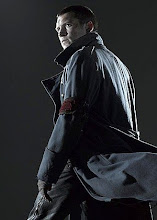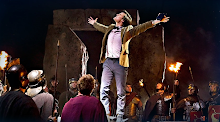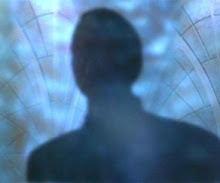Every internet user is a critic. From status updates to blogs, wikis to eBay feedback, we're all pundits, constantly voicing our opinions. Fan-written film reviews outnumber those of professional critics by about ten to one, so that's not what I'm posting here.
First of all- and I'm faintly staggered to think I haven't discussed this up 'til now- let me say that I am a Star Trek fan to my very core (and do please note I said 'fan': I reject 'Trekkie'/ 'Trekker' for the same reason Doctor Who devotees dislike 'Whovian'). Star Trek has simply always been there, it is a fundamental part of my being and I simply cannot imagine my life without it. I could no more cease to love Star Trek than I could stop being Welsh or change who my parents are. It's hardwired, down to my DNA.
With that mind, my ambivalence towards the big screen reboot (which is what it is, let's not split hairs) should be obvious even to those of you who haven't seen my sarky work-in-progress betterthanmemoryalpha.blogspot.com (and shame on you if you haven't).
Ordinarily I'd start with a discussion of what I liked about a particular movie (or whatever), then move on to the 'meat' of the review, wherein I'd tear it to pieces. But I am not Comic Book Guy, and having now forced myself to keep an open mind through two jaunts in the J.J. Abramsverse, I don't intend to revert to fanboy stereotype.
I saw Star Trek Into Darkness two days ago and I found a hell of a lot to admire, which easily balanced out all that I expected to find irksome and objectionable.
This then, is what is what I thought of the film
(SPOILER WARNING for real this time)
What Star Trek Into Darkness did that I didn't like
Let's start with the biggie: I cannot imagine that there wasn't at least one line, somewhere in the script which referred to Khan undergoing surgical alteration, or something similar to disguise his identity and create the 'John Harrison' persona, and whoever chose to cut said line wants shooting. If there was no such line, it completely beggars belief. Either way, the gigantic incongruity of having a whiter than white actor (whose name is Benedict Cumberbatch for God's sake), with his ice blue eyes and received pronunciation, playing a character named Khan Noonien Singh, and the other characters' failure to comment upon or even notice said incongruity, only serves as a constant, niggling distraction whenever he is on screen.
It's true Khan's ethnic background was never set in stone, he being genetically engineered and with a name suggesting a dichotomy of Sikhism and Islam- and Ricardo Montalban was no more Indian than Benedict Cumberbatch- but the intent of the writers of "Space Seed" is plain. Benicio de Toro, a Puerto Rican, was first choice for the 'Harrison' role. Montalban was Mexican.
I don't believe, as many seem to have assumed, that Cumberbatch's casting was a case of Hollywood so-called 'whitewashing' (and having an actual Indian-born in the role actor in the role might have rather given the game away), but what's most perplexing is why Abrams and co. were so set on having Khan as the villain in the first place.
In 2009, we heard endlessly of how this new team had revitalised Star Trek, freeing it from decades of calcified continuity and derision as a television relic, how they had bravely transformed the old war horse into something thrillingly new (and being a DC Comics fan, I had to endure all this bollocks again in 2011), and yet here we are on only the first sequel and already the new blood are covering old ground.
It's not hard to see why Khan was an attractive prospect, and ignoring him might have felt too much like doing a new Batman and leaving out the Joker, but for a series that supposedly prides itself on being Not Your Father's Star Trek, there's an awful lot of assumed audience recognition, a rather lazy reliance on Khan's resonance and pop cultural clout. I, for one, am not convinced Joe Public has that long a memory; he may remember the name 'Khan', but the Eugenics Wars? The Botany Bay? The filmmakers don't seem entirely convinced either, and in trying not to come across like something written by fanboys, for fanboys, Khan's backstory is delivered in one vague, throwaway chunk of dialogue. To fans like myself it's infuriating. For anyone new to Star Trek, Khan's character arc (ha!) must just come across as a whopping great plot contrivance. It's not as if Harrison Khan is much like the original anyway.
Khan was by definition a grand, operatic villain, possessed of charm and guile as well as ruthless intellect. He was effortlessly magisterial, an opponent to be admired. His ambition was what made him scary. Khan was like every fascist dictator from history, the crucial difference being he was genuinely superhuman, not merely a despot with a god complex. He mangled a phaser with his bare hands and that told us as much as we needed to know about his physical powers. He certainly never crushed anybodies' skull. He didn't need to.
Now I'm not questioning Cumberbatch's chops but his Khan is written and presented like a serial killer, more Hannibal Lecter than Bond villain, all cold, unblinking monotone for the first half of the film, snarling, deranged and vicious for the second. His ass-kicking abilities (yawn) are what makes him scary. Cumberbatch's Khan is a terrorist, Montalban's was a king in exile.
The climactic foot chase across San Francisco I found a tad embarrassing; "how did you defeat him?" asks Spock of his older self, and apparently the answer was 'ran him down and beat him senseless'. All rather undignified.
For a moment it seems as if the film and its marketing campaign have very cleverly wrong-footed us, that Khan is not the villain of the film at all. Peter Weller's Marcus, the latest in a long line of insane/ corrupt Starfleet Admirals, is the true Big Bad of the picture, and his callous "I was never going to spare your crew anyway" provides more of a gut-punch than anything Khan does. However, since Marcus is motivated by paranoia about war with the Klingons- and we don't have much of a sense of the Klingons as a major power in this version of the Trek universe- his hawkish agenda lacks gravity.
While I'm on the subject, the viewscreen exchange between Marcus and Kirk also includes the risible moment where Carol is being beamed off the bridge and tries to make a run for it. The 'transwarp beaming' howler makes reappearance too, and the very dodgy science-is-what-we-say-it-is rationale of the first film is still very much in evidence (Big Important Switch behind the deflector dish needs to be thrown in the event of a power failure, for instance. Very Galaxy Quest), as is the boiler room design aesthetic that gives the 21st century Enterprise stairways, railings, wheel locks and a gigantic fresh water system. Oh, and they actually have a warp engine this time, although it looks more like something put together by CERN. No wonder the bloody ship is so horribly out of proportion. Like I said, I tried my best to leave the fanboy part of me at home, but I can't help but pine for the days when a whole team of designers, consultants and production personnel made sure stupid shit like this did not end up on the screen. Abrams' lot still haven't decided how big their Enterprise is actually supposed to be.
In addition, there are issues of plot convenience (the tribble that comes back to life at just the right moment. How long was Bones planning to leave a dead ball of fur lying around in sickbay, by the way?) and timescale (the film could take place over a single day or a period of several weeks) common to Hollywood blockbusters.
In the end, what we have is a plot that makes even more of a self-conscious effort to duplicate Wrath of Khan than Nemesis did but somehow manages to be even less successful in doing so. Central to Wrath of Khan's status as Trek's artistic highpoint are mature themes of ageing and family, and most especially the bond between Kirk and Spock. Some commentators have suggested the classic Kirk-Spock-McCoy triumvirate of the original series has become Kirk-Spock-Uhura for the Alternate Reality movies, but I dispute this: Uhura just isn't in the thick of things enough for there to be any kind of 'triumvirate', or God help us, a love triangle. The cast dynamic is very different here, still rooted in the status quo of the first film: Scotty is still the comic relief, Chekov is still an awkward teenager, and Kirk and Spock's relationship is still based on antagonism more than anything else. The only one of the gang who exhibits any growth is Sulu, and that's in spite of the early plot cul-de-sac about Kirk needing to learn humility. Yes, that's the guy who saved Earth and was promoted from cadet to captain, remember? Kirk is supposedly humbled by the events of the film, but is pretty much vindicated by the end. And it has to be said, Kirk and Spock may as well have known each other for a week for all the emotional impact Kirk's 'death' scene has. It only works because Pine and Quinto both act their hearts out.
As far as the cast are concerned, I can only assume Anton Yelchin had a very busy schedule, since it looks as if his scenes were all shot in a couple of hours. Chekov briefly becomes chief engineer, he saves Kirk and Scotty towards the end, but has basically nothing of any substance to do. Uhura only narrowly avoids being reduced to the nagging girlfriend role. And once again I found myself wishing both Karl Urban and the screenwriters would get it into their heads that McCoy's character did not begin and end with his grumpiness- My God man, crack a smile for once! As for Alice Eve's Carol, she was OK; she didn't have a lot to work with, really. It saddens me she'll chiefly be remembered for the pointless, gratuitous, embarrassing, offensive, this-will-look-great-in-the-trailer bra and panties shot. It made me cringe when I saw the trailer, it made me cringe all the more when I saw it had made it into the final cut of the film. T&A for its own sake? What is this, Enterprise?
The militaristic grey uniforms and peak caps were wildly misgusided, too
What Star Trek Into Darkness did that I really liked
Pure fan service yes, but the line-up of model spacecraft behind Admiral Marcus' desk, with the NX-01 and the XCV-330 present and correct? Fantastic. Bravo!
Whereas most blockbusters feature spectacular visuals that are simply technically accomplished, Into Darkness boasts moments of genuine awe. There's something quite joyous in seeing the Enterprise rising from the ocean and flying over a volcano, and the warping effects are magical. In fact, the whole opening episode, up to and including that picture-in-the-sand punch line, captures the spirit of the Original Series beautifully. Starship combat accounts for surprisingly little of the action and it's oddly refreshing. The tone is kinetic and visceral and it works. The USS Vengeance avoids being the carbon copy of the Narada we all feared, and more than any film since The Motion Picture we get a sense of the Enterprise as real spaceship, huge and powerful and a dangerous place to make a career.
The space jump comes dangerously close to being a re-tread of the drop sequence from the 2009 film, but is exhilarating all the same and unlike any action scene I can recall from any other SF film. The heads-up display compass was very nifty too, even though I didn't care for the Tron helmets.
Making the Klingons scary again. Now this was always going to be controversial: we fans love the Klingons, we find their attitude and culture appealing, even aspirational, and we've come to know them so well that after all these years it's hard thinking of them as the bad guys. But the TOS era was one of Cold War, and the Klingons were always portrayed as a brutal, barbaric, conquering species, everything our heroes weren't. The Klingons of Into Darkness are terrifying, demonic warriors and honestly, I thought they were cool. I even like the helmet things.
Almost all of the cast up their game from the first film, Pine especially standing out. From his shit-eating cockiness (less abrasive this time round) to moments of despondency and guilt, blind anger and heartbreak over Pike's death, he is superb throughout. I found his Kirk far more endearing here, more recognisable as a charismatic but fallible leader, capable of extraordinary bravery. That's our James T! As I said above, the radiation chamber bit feels artificial but Pine and Quinto sell it with terrific performances. Much of Spock's dialogue is overly mannered and stiff, which doesn't do Quinto any favours (nor does that haircut), but he's got it where it counts. Once again, moments where Spock's grief shows through the logical facade are quite heart-breaking. This is a very clever actor. A word of appreciation also for Simon Pegg, whose Scotty is actually funny, rather than simply goofy this time round. He still bears little resemblance to Doohan's Scotty but comes across as a more well-rounded individual, loyal, brave and principled. And he did make me laugh out loud more than once.
What I was taken with, more than anything, was the great expanse of the film, the diversity on show. 23rd/ 24th century Earth has appeared in many Star Trek stories, usually as a backdrop, a matte painting or a water reclamation plant with a few extras milling around it. We know it is a utopia, free of crime or conflict, and it's generally pretty bland. A studio set doesn't offer much of an insight into a fictional society and we never truly got a sense of what life on Earth of the future was like. The Picard family vineyard or Sisko's creole restaurant were little more than anachronisms. Star Trek’s Earth was where characters came from, nobody that mattered actually lived there. Star Trek (2009) took steps to correct this, grounding our heroes' early days in a world still full of bar brawls and divorce lawyers. Perhaps not strictly in the spirit of Roddenberry's ideals, but it was the right call. Into Darkness goes much further; not only do we get our first look at the (hugely impressive) future London, we also see country houses, cars, hospitals, high-rises, ambulances and, most importantly, lots and lots of people. The keen eyed might spot some lovely 60's-style clothes and hairstyling among the patrons of the bar (in addition to Scotty's very funny faux-disco ensemble), and little touches like Kirk's ice cube that expands when drink is poured on it are clever hallmarks of a living, breathing future world. For once, this future feels credible and lived-in. There are a larger number of aliens on show than in the first film, all of them colourful and interesting, and the Enterprise's crew has never been so diverse. The navigator, a black woman with close cropped hair, played by Aisha Hinds (familiar from many US TV series') or the young blonde ensign with the hipster haircut, even that inexplicable, bald android bloke... all reminders that Starfleet is comprised of individuals from countless cultural backgrounds. This is how it was always meant to be. It's a world away from the same boring handful of L.A. bit-parters we used to see, week in, week out on Voyager. Marvellous.
Oh, and Tyler Perry didn't reprise his role, that was good too.
In conclusion then, did I have issues with the film? Absolutely. Did I enjoy it? Thoroughly.
Saturday 18 May 2013
Friday 10 May 2013
Revelations from Star Trek Into Darkness
J.J. Abrams' hotly anticipated Star Trek sequel finally opens this month. Among the thrills fans can expect from Into Darkness:
- Klingons speak in hilarious parodic hip-hop lingo; "this looks like a cool place to kick it!"
- Extended cameo by Kal Penn as strangely mellow alien ambassador escorted by Sulu
- Controversial lens flares from first film replaced with relentless, Star Wars-style screen wipes
- Benedict Cumberbatch's character John Harrison revealed to be cockney actor hired by film's true villain, Janice Lester
- Chekov killed moments after donning red uniform, in one of many whimsical references to classic Star Trek sure to delight fans
- Original Series character Richard Daystrom played by actress Grace Park
- One, mercifully brief scene of Simon Pegg in kilt
- Android crewmember representing product sponsorship deal with Android operating system
- Andrew W.K.'s "Party Hard" played during chase scene
- More reaction shots. Many, many more.
- Keenser turns out to be Khan
Subscribe to:
Posts (Atom)






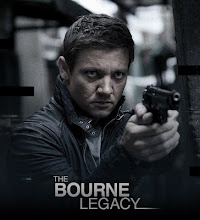

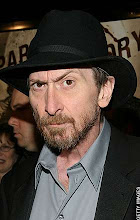
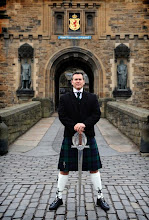





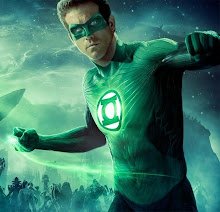


.jpg)

